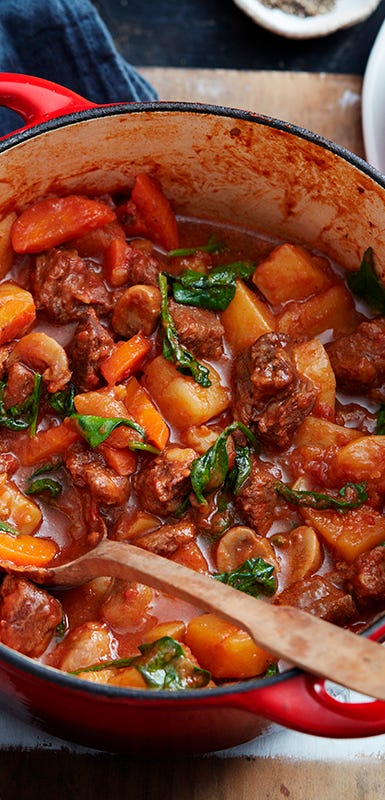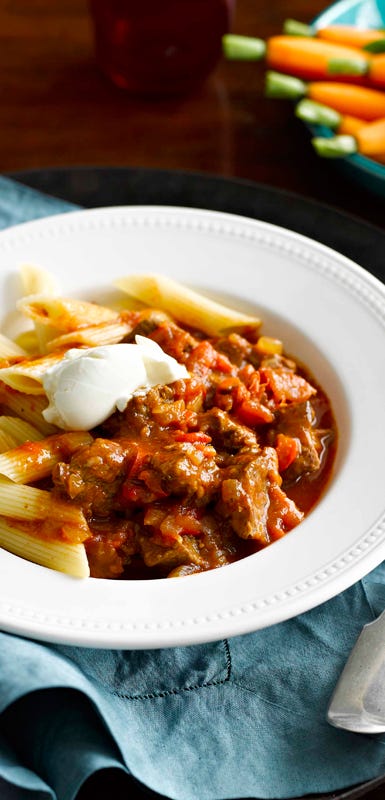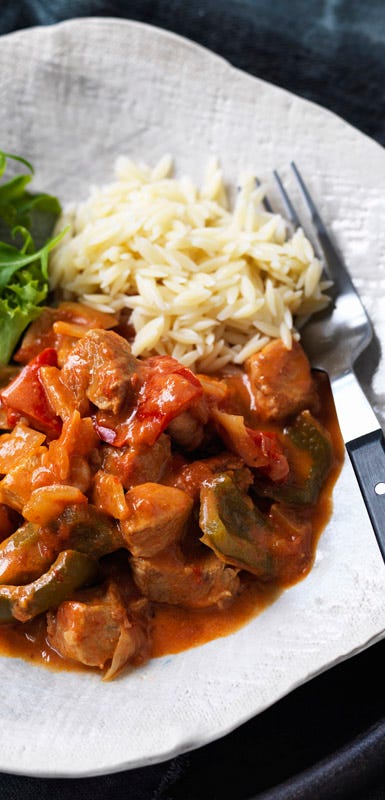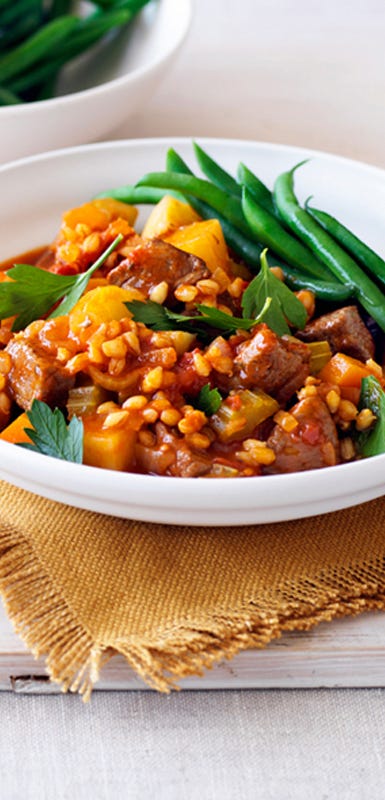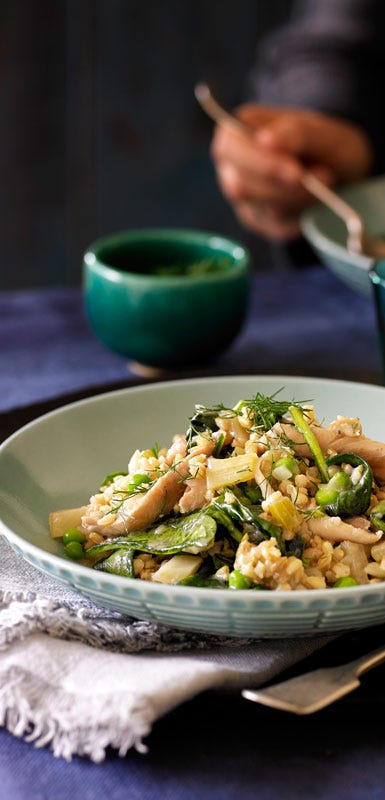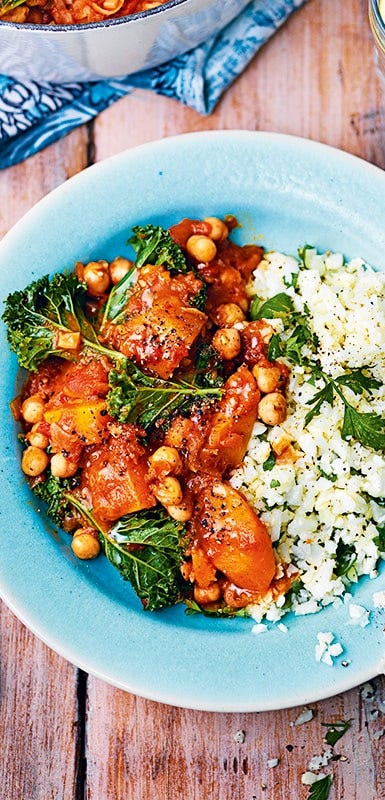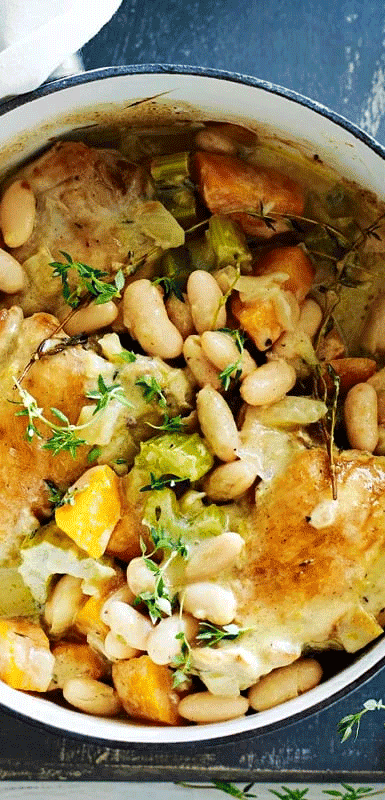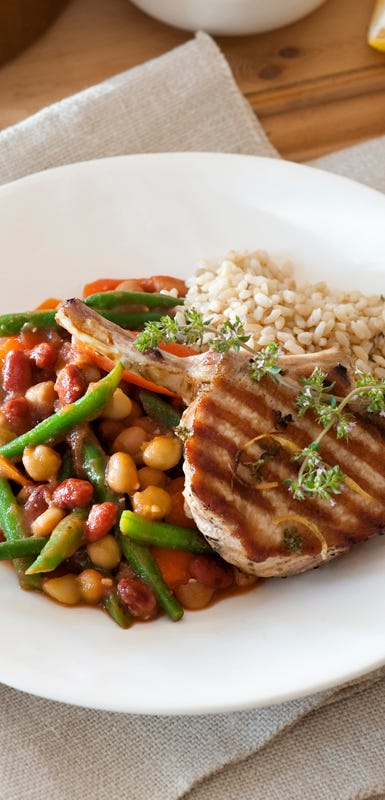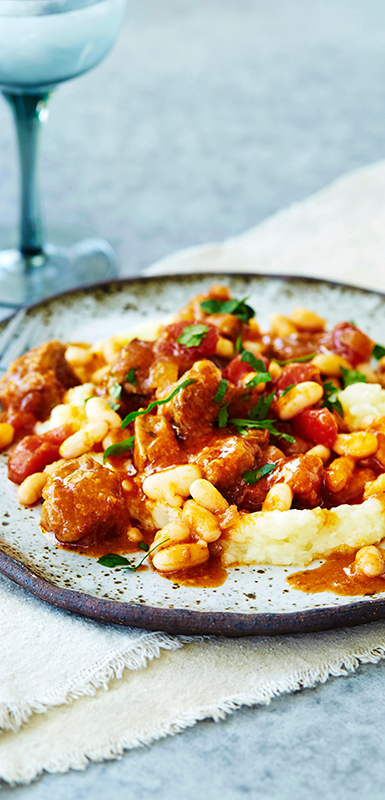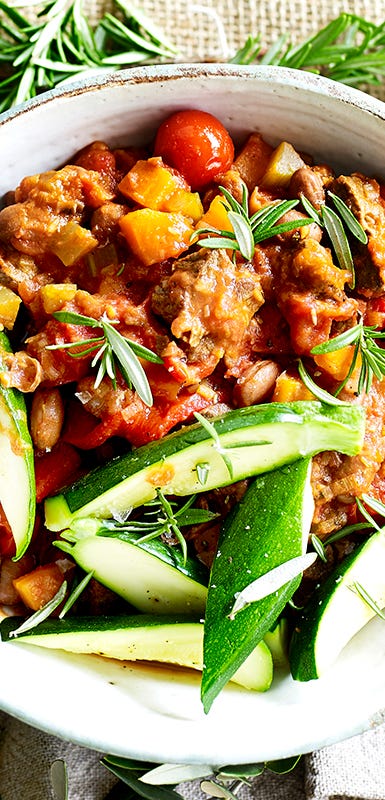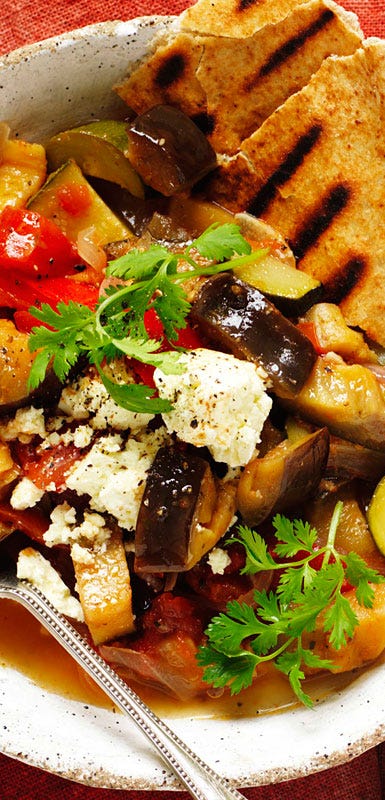What is the difference between stewing and braising?
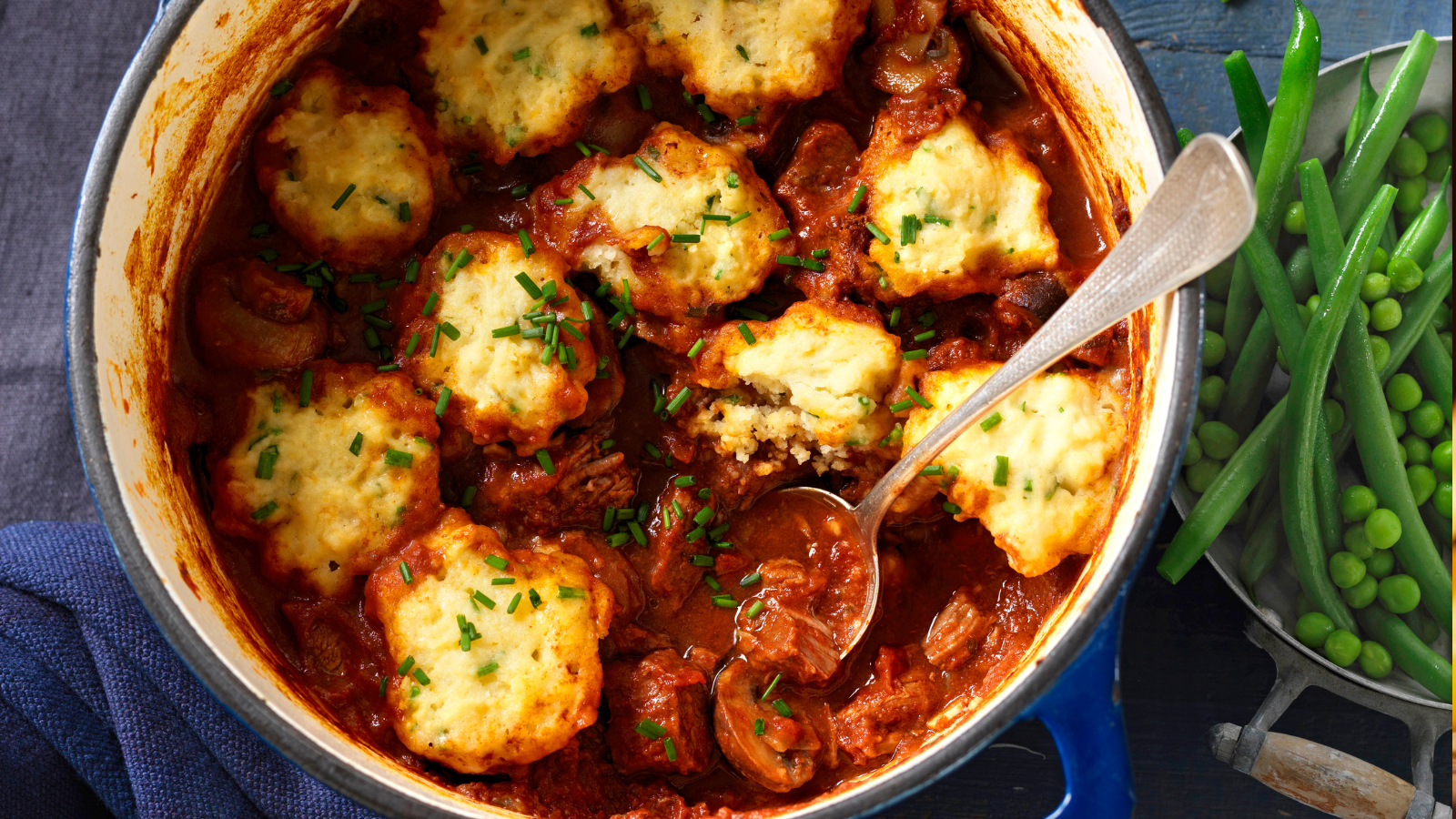

Stewing and braising guide
Both these methods use low heat and slow cooking to add flavour to everything from meat, chicken and seafood to veggies and legumes (such as beans and lentils). It’s really good for cheaper cuts of meat as it breaks down the connective tissue and muscle fibres so they become deliciously tender. Plus, any fat will rise to the surface as it cooks so you can skim it off.
Braising involves cooking large pieces of meat or chicken partially covered in liquid, while stewing uses smaller pieces of meat totally immersed in liquid. The liquid will usually be a combination of stock and water. You can also add wine, vegetables, tomato paste, herbs and spices to create an endless variety of flavours. Best of all, once you’ve popped all the ingredients in the pot, most of the work is done. All you need to do is check on it every now and again and serve it up!
Step-by-step stewing and braising
Step 1
Preheat the oil in a flameproof casserole dish over high heat. Cook your meat, turning, until brown on all sides. You don’t need to cook it through; you just want a good caramelisation on the surface. Transfer to a plate.
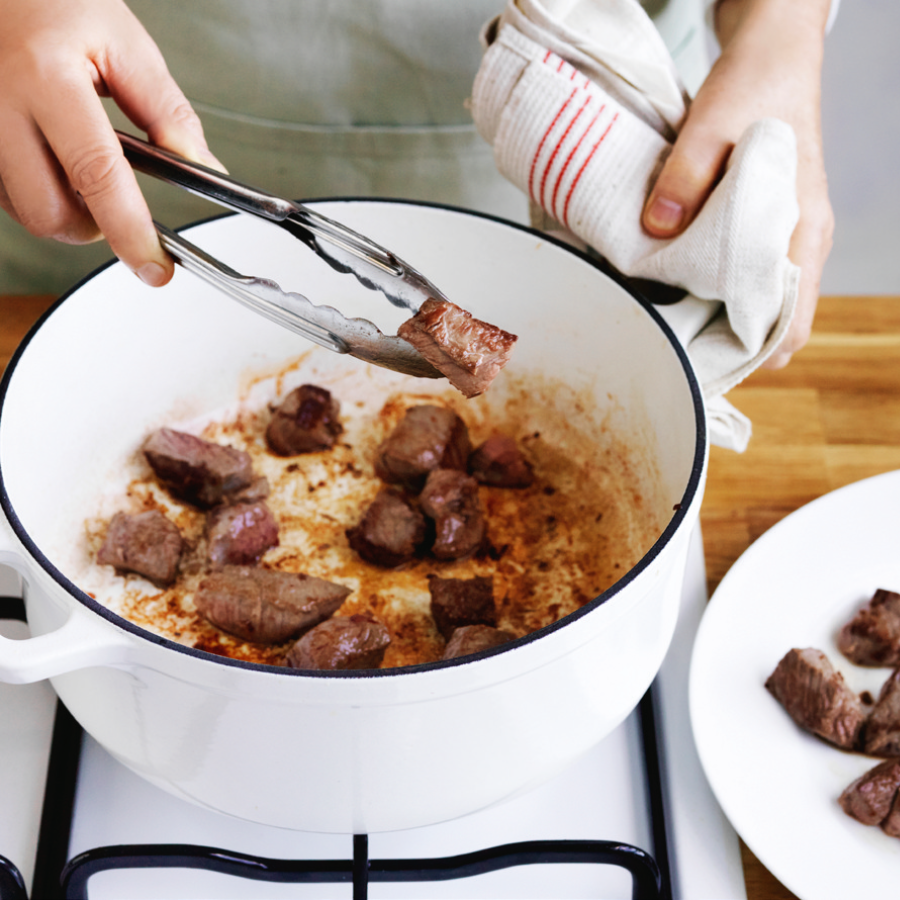
Step 2
Add a little more oil to the same dish and cook your base vegetables (traditionally finely chopped carrot, celery and onion) until softened. Add any spices (if using) and cook for 30 seconds or until aromatic.
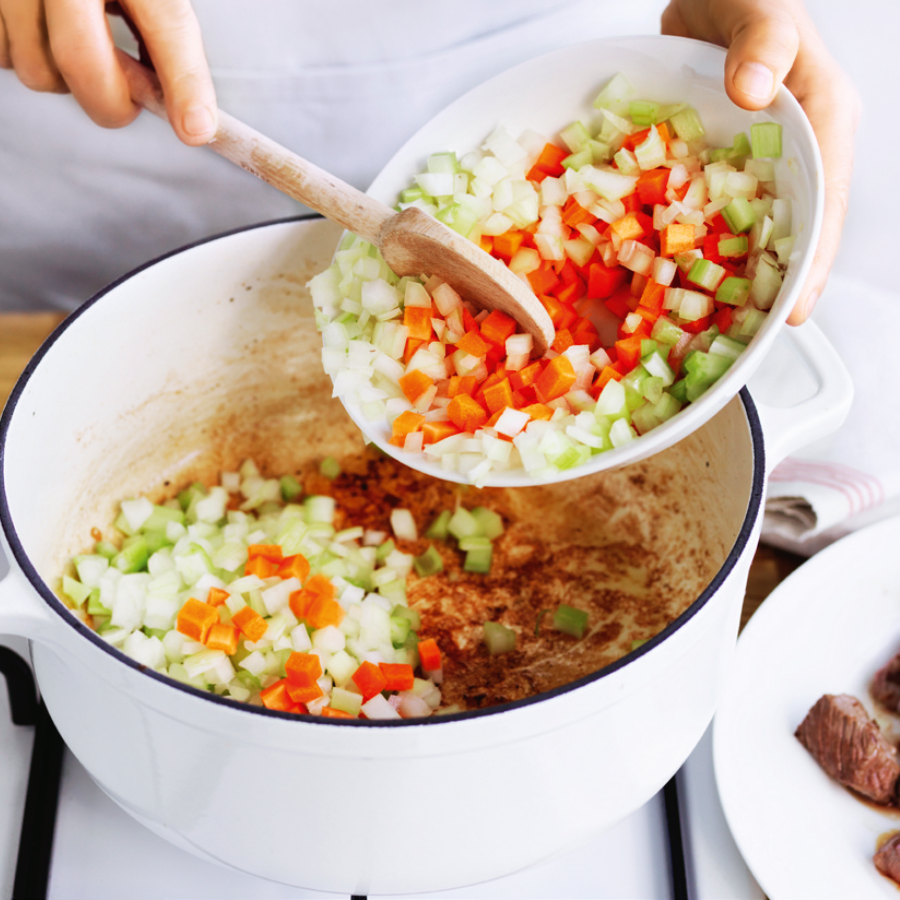
Step 3
Return the meat to the pan. Add the liquid and bring to the boil. Reduce heat to a simmer or place in an oven preheated to 180°C or 160°C fan-forced. Cook until meat is tender and can be pulled apart with a fork (about 1-2 hours for stewing; 1-3 hours for braising). If you want vegetables such as potatoes and pumpkin to hold their shape, cut them into large pieces and add them towards the end of cooking.
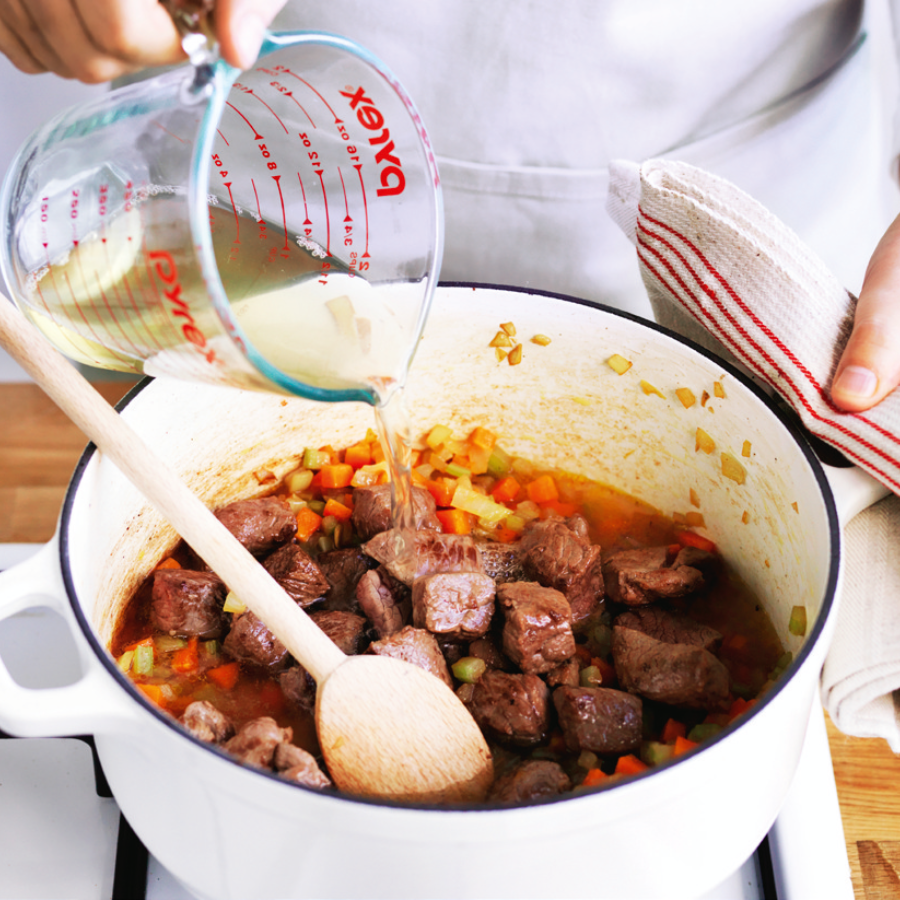
Stewing and braising cooking equipment
Along with the basic kitchen equipment, you need a:
Flameproof casserole dish (about 3-4 litre capacity)
If you need to finish your dish in the oven your best braising or stewing friend will be a large enamelled cast-iron pot. These are safe to use on most hotplates to sear your meat and bring the liquid to the boil, which saves dirtying another pan.
Large saucepan or stockpot (about 8-10 liter capacity)
When you are only cooking on the stovetop, a large saucepan or stockpot is ideal. Choose good-quality stainless steel with a reinforced base and a close-fitting lid. A stockpot is particularly handy if you need to double a recipe to cook for a crowd or want to freeze half for another meal.
Slow cooker
As you fall in love with this type of cooking, you may want to invest in an electric slow cooker. Look for one with a browning function so you don’t need a separate pan.
Different cuts of meat for stewing and braising
This cooking method is the perfect opportunity to save money by purchasing cheaper cuts of meat that benefit from long slow cooking, as well as seasonal fruit. Try these:
- Beef: diced chuck, round, blade, topside and skirt steak; fresh silverside; boneless shin (gravy) beef.
- Veal: shanks; osso bucco; diced shoulder.
- Pork: diced shoulder, leg and scotch (neck) cuts; spare ribs.
- Lamb: diced shoulder, topside, leg and forequarter cuts; shanks; neck and forequarter chops.
- Poultry: all types but pieces on the bone add more flavour.
- Vegetables: carrots, parsnips, turnips, sweet potato, pumpkin, fennel, eggplant and most dense vegetables with a low moisture content work well.
- Fruit: apples, apricots, cherries, pears, peaches, rhubarb (this may need a little sweetener), quince, plums and berries.
6 simple secrets to stewing and braising
- Most stews freeze well, so make double the amount and freeze the extra portions in meal-sized containers. Then just defrost and reheat as needed.
- Got surprise extras to feed? Dried lentils, split peas, beans, barley and soup mix are an easy way to bulk up a stew so it goes further.
- If your stew is watery, remove the meat, poultry, fish or vegetables from the pot. Boil the liquid on the stovetop until it reduces and thickens.
- Stews often taste better the next day so try cooking them 24 hours ahead. Any fat will also rise and harden in the fridge so it can be scraped off easily.
- To stop stews and braises drying out during the long cooking process, place baking paper under the lid to create a good seal.
- Stewed fruit is a terrific topping for yoghurt, porridge and cereal. Simply chop the fruit into uniform pieces and cook with 1–2 tablespoons of water. The riper your fruit, the sweeter it will be, so you won’t need much (if any) sugar.

